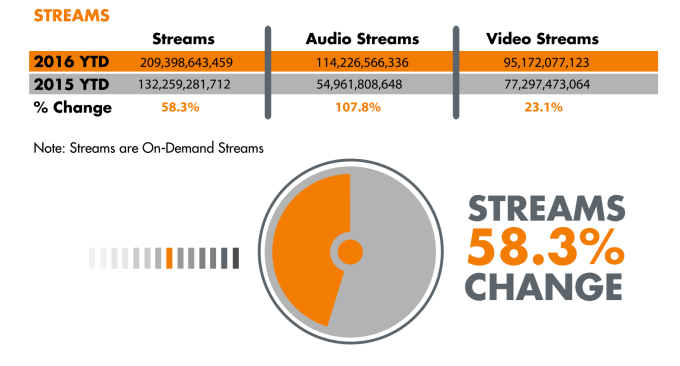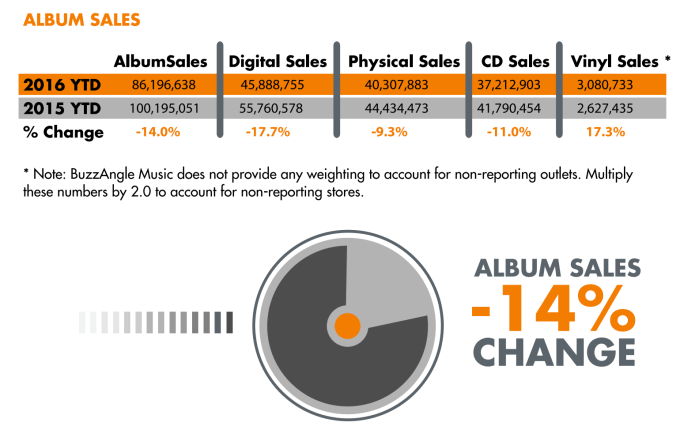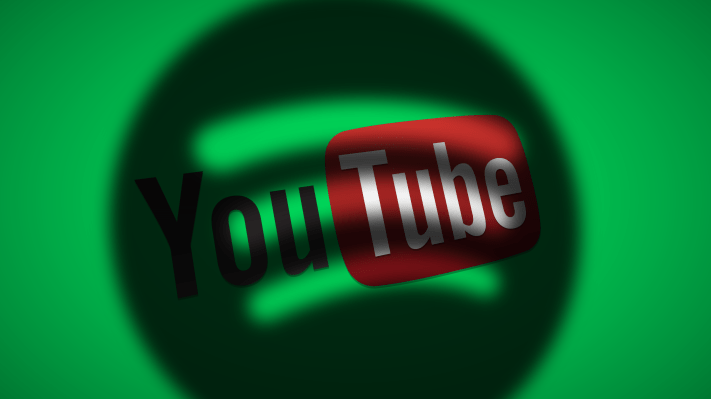Audio didn’t quite kill the video star, but it’s making a comeback. Americans are now on-demand streaming more songs as audio than they’re consuming through music videos. The shift highlights the importance of music in the battle for mobile profits, plus it could help artists get paid more.
Analytics provider BuzzAngle Music tells TechCrunch that since the start of 2016, Americans purposefully played 114 billion audio streams on apps like Spotify, Tidal, and Apple Music, versus watching 95 billion music video streams on apps like YouTube. This represents a big resurgence for pure listening since the rise of MTV.
On-demand Audio streaming was up 107.8 percent in the US compared to the first half of 2015, while video streaming grew 23 percent. On-demand streaming as a whole rose 58.3 percent, and these numbers don’t count online radio streaming like Pandora.

A sizable amount of on-demand music streaming is coming from paid subscription services like Spotify and Apple Music than can charge $9.99 for unlimited access. While YouTube recently launched its own ad-free subscription service, most users watch for free but endure ads. Royalties from subscription music services pull in more revenue than ads on videos, earning musicians more per listen.
With royalties taking up so much of what Spotify earns, it’s waging a tough war against a deep-pocketed opponent. Apple launched its on-demand streaming service in June 2015, bringing its enormous horde of cash earned from iPhone sales to the competition. This money helps it recruit new listeners through ads and secure exclusives like the early release of Drake’s new album “Views”, which BuzzAngle says was the year’s top album.
If Apple can gain a loyal audience for its Music app, it might have better luck getting those people to buy more of its pricey hardware. Spotify meanwhile just raised $1 billion in debt with dirty terms to fuel the battle. It has to hope its free ad-supported tier can more effectively recruit listeners and convert them to paid subscribers than Apple Music’s three-month free trial.

Music sales continue to decline, with digital song sales down 24.2 percent and album sales down 17.7 percent. Despite vinyl popularity amongst hipster increasing old-school record sales by 17 percent, physical CD sales dropped 9% pulling down all physical album sales down 7% from the first half of 2015.
Streaming Royalties still aren’t replacing what artists made from records at the peak of the $16.99 CD era. But transitioning more fans to paid subscription services could lessen the gap.
The convenience and portability of audio streaming lets listeners immerse themselves in an artist’s albums, not just their popular single that has a video. Rather than flitting from artist to artist watching music videos, streaming apps like Spotify make it easier to dive into a musician’s whole catalog. That could make people more likely to spend money on a musician’s merchandise and concert tickets.
The MTV age meant musicians couldn’t just make music any more. They had to be actors too. Now media is undergoing another shift. Any artist solely focusing on their recorded music sales and streaming royalties isn’t adapting.
To earn a good living, musicians must become merchandise designers, live performers, social networkers, TV commercial soundtrack composers, and more. Today, musicians don’t sell music. They need to sell a connection between them and their fans by every method available.
